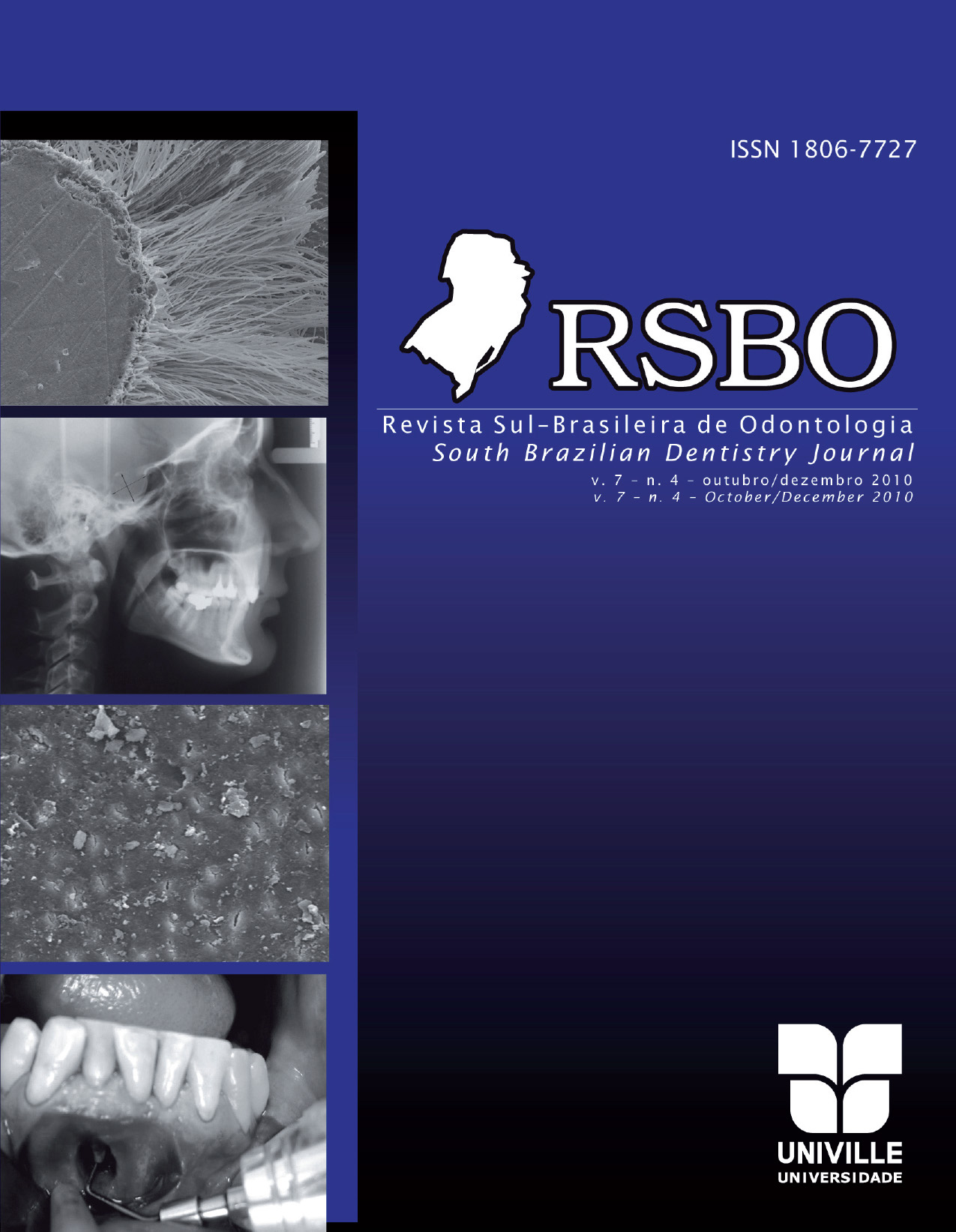Evaluation of professors’ and students’ knowledge on crown-root fractures
DOI:
https://doi.org/10.21726/rsbo.v7i4.1176Palavras-chave:
trauma; Endodontics; dental education.Resumo
Objective: The aim of this study was to evaluate the knowledge on crownroot fractures among professors and students of a school of dentistry.
Material and methods: A questionnaire comprising the treatment options
for crown-root fractures at different depths and their follow-up periods
was applied to 122 subjects divided into three groups: 1) students who
had not attended any Endodontics and Surgery disciplines, 2) students
who had concluded these disciplines; and 3) professors. The data was
analyzed by descriptive statistics. Results: Most of Group 1 (90.3%) did
not know the procedures to be adopted in cases of crown-root fractures.
Conversely, more than 80% of Group 2 and 95% of Group 3 knew the
procedures. Concerning to crown-root fractures up to 2mm deep, 26.9%
of Group 1 and 48.5% of Group 3 would perform crown lengthening;
46.2% of Group 2 would perform fragment rebonding. In relation to
fractures between 2 and 4mm deep, 21.2% of Group 1 would perform
tooth extraction; 28.6% of Group 2, fragment rebonding; and 40.7%
of Group 3, orthodontic extrusion. In fractures more than 4mm deep,
most members of all groups would perform tooth extraction followed by
implant. With regard to follow-up appointments, most members of all
groups stated that their frequency should be at every 6 months (during
the first year) and every year (for 5 years). Conclusion: Students of Group
1 showed poor knowledge on crown-root fractures, while members of
Groups 2 and 3 showed a proper knowledge.

